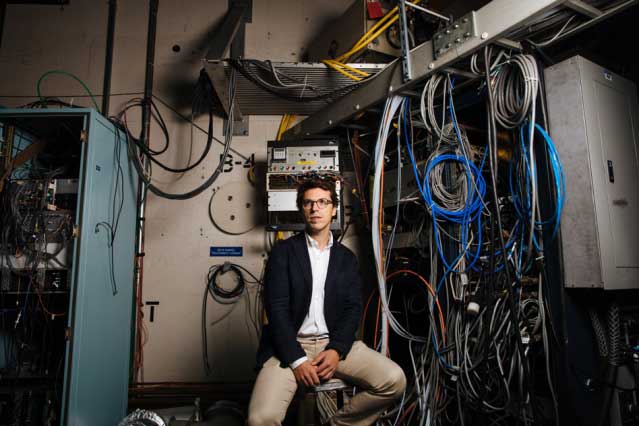Plasma is a kind of the fourth phase of matter, like a gas yet with the particles stripped separated into a sort of soup of electrons and atomic nuclei. It forms around 99 percent of the matter in the universe, including stars and the wispy tendrils of a material spread between them.
Among the trickiest difficulties to understanding the conduct of plasmas is their disturbance, which can disseminate away energy from a reactor, and which continues in exceptionally complex and difficult to foresee ways — a noteworthy hindrance so far to practical fusion power.
While everyone is familiar with turbulence in fluids, from breaking waves to cream stirred into coffee, plasma turbulence can be quite different, Loureiro explains, because plasmas are riddled with magnetic and electric fields that push and pull them in dynamic ways.
Nuno Loureiro from MIT faculty at the Plasma Science and Fusion Center said, “A very noteworthy example is the solar wind, an ongoing but highly variable stream of particles ejected by the sun and sweeping past Earth, sometimes producing auroras and affecting the electronics of communications satellites. Predicting the dynamics of such flows is a major goal of plasma research.”

Image: Jared Charney
“The solar wind is the best plasma turbulence experiment we have. It’s increasingly well-diagnosed because we have these satellites up there. That gives us relatively good access to it experimentally. By contrast, studying turbulence in plasma clouds in the interstellar medium, far out between the stars, doesn’t include the luxury of direct sampling, and must rely on more indirect observations and calculations. There are no diagnostics whatsoever, other than from observational astronomy.”
His work at MIT has focused on a very specific area of plasma behavior, called magnetic reconnection. One example of this process occurs in the sun’s corona, a glowing irregular ring that surrounds the disk of the sun and becomes visible from Earth during solar eclipses.
Vast loops of solar material are ejected from the surface, entrained in vortices of magnetic fields. Sometimes these magnetic fields become unstable and collapse back, unleashing a burst of energy as a solar flare.
A year ago, Loureiro distributed a progression of papers with physicist Stanislav Boldyrev at the University of Wisconsin, in which they proposed another model to accommodate noteworthy disparities between models of plasma turbulence and models of magnetic reconnection.
Up until this point, he says, with this new model, “the sorts of things we’re foreseeing here are entirely lined with perceptions.” Some parts of it, be that as it may, may require new advances in observational advances to be tried.
Be that as it may, the new idea, whenever demonstrated, demonstrates that magnetic reconnection must assume a critical job in the dynamics of plasma turbulence, at all scales, or, in other words, that Loureiro and Boldyrev say would change the comprehension of the elements and properties of space and astrophysical plasmas.
Loureiro says that a real understanding of turbulence in plasmas is essential for solving a variety of thorny problems in physics, from the way the sun’s corona gets heated to the structure of interstellar clouds to the dynamics of disks around black holes. And so he plugs away, using whatever tools may become available, to continue trying to unravel the complexities of plasma behavior.
